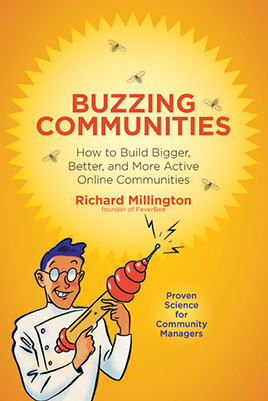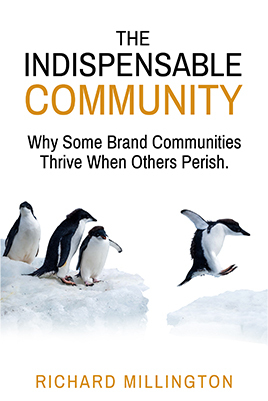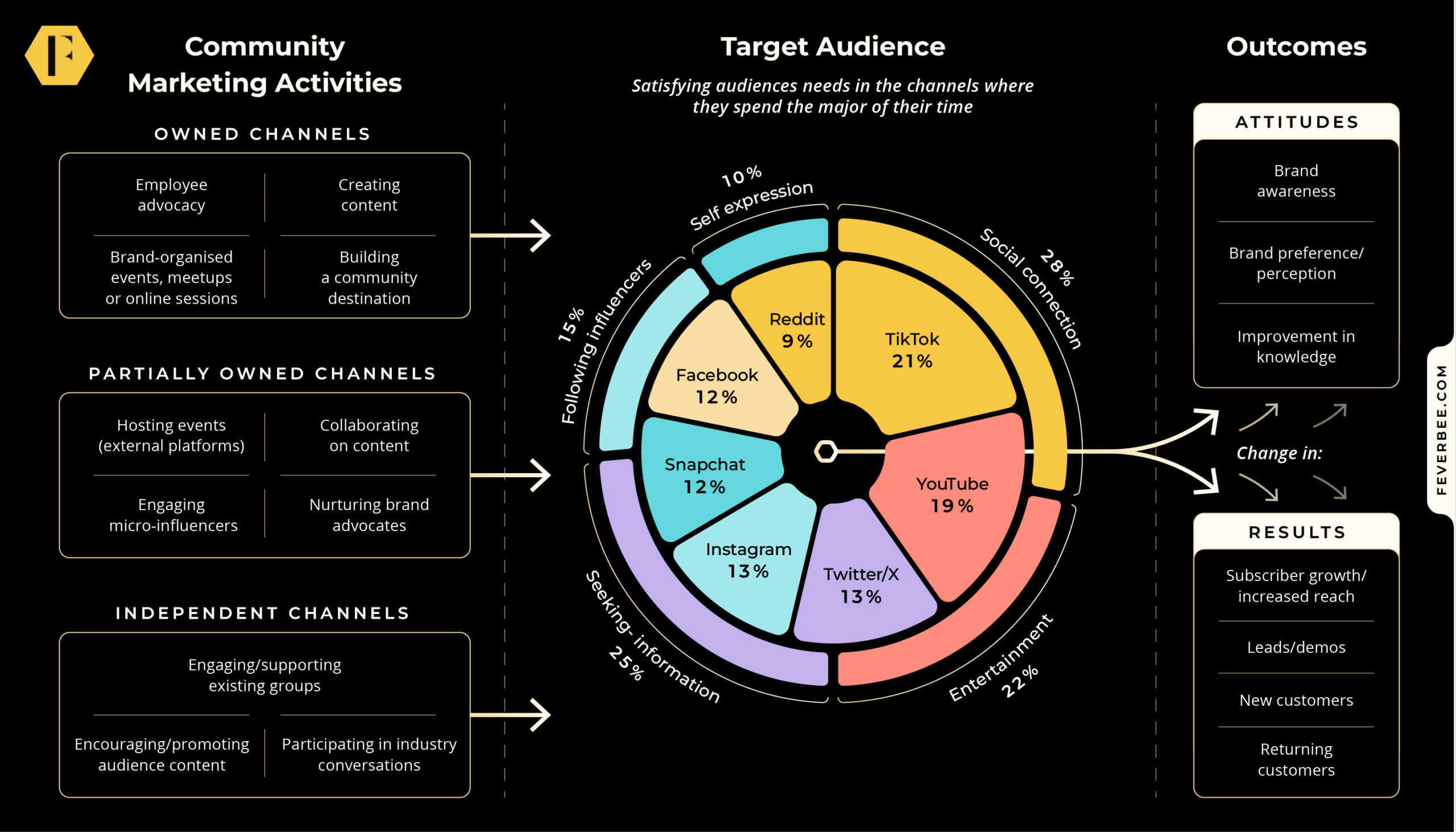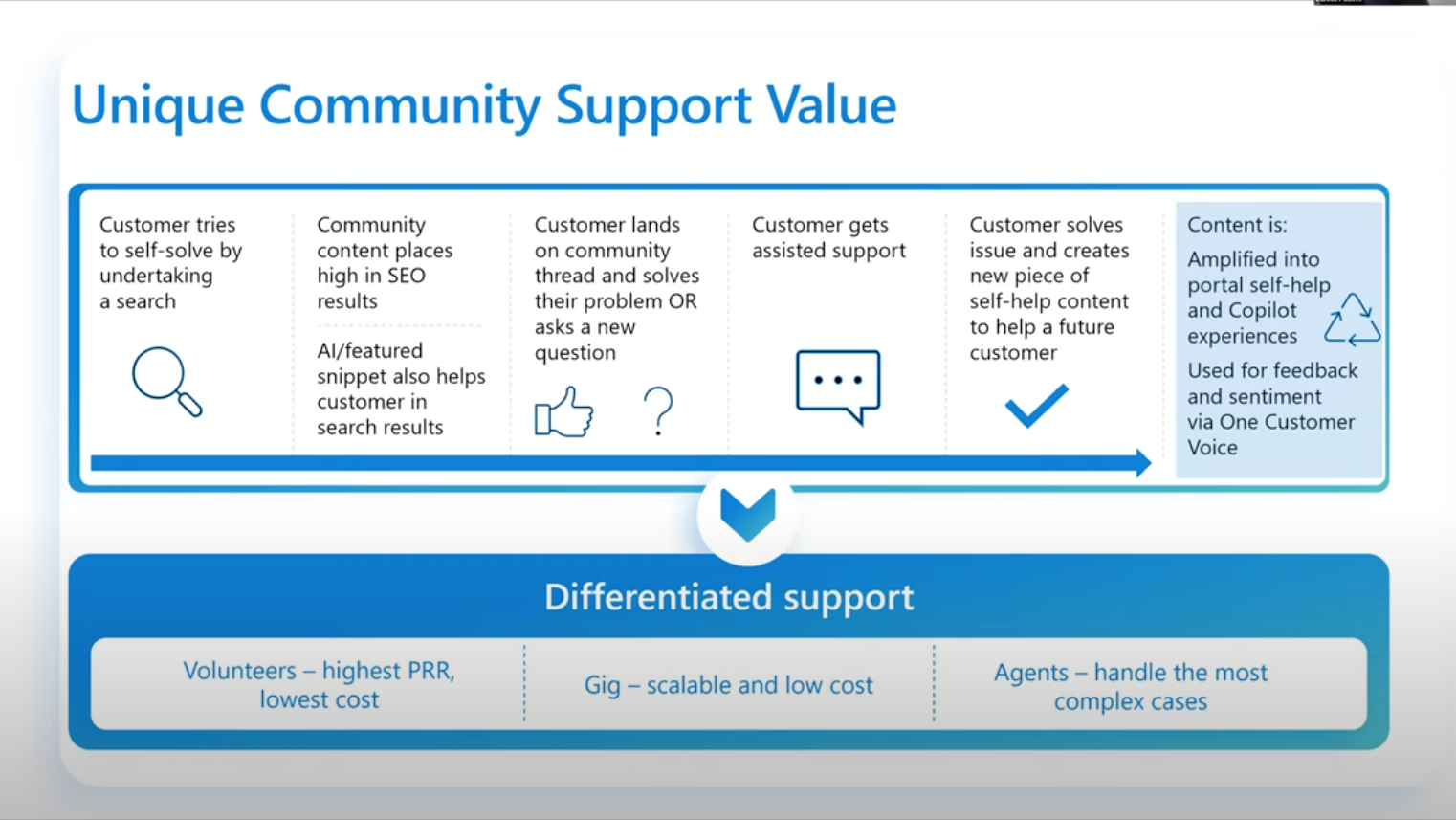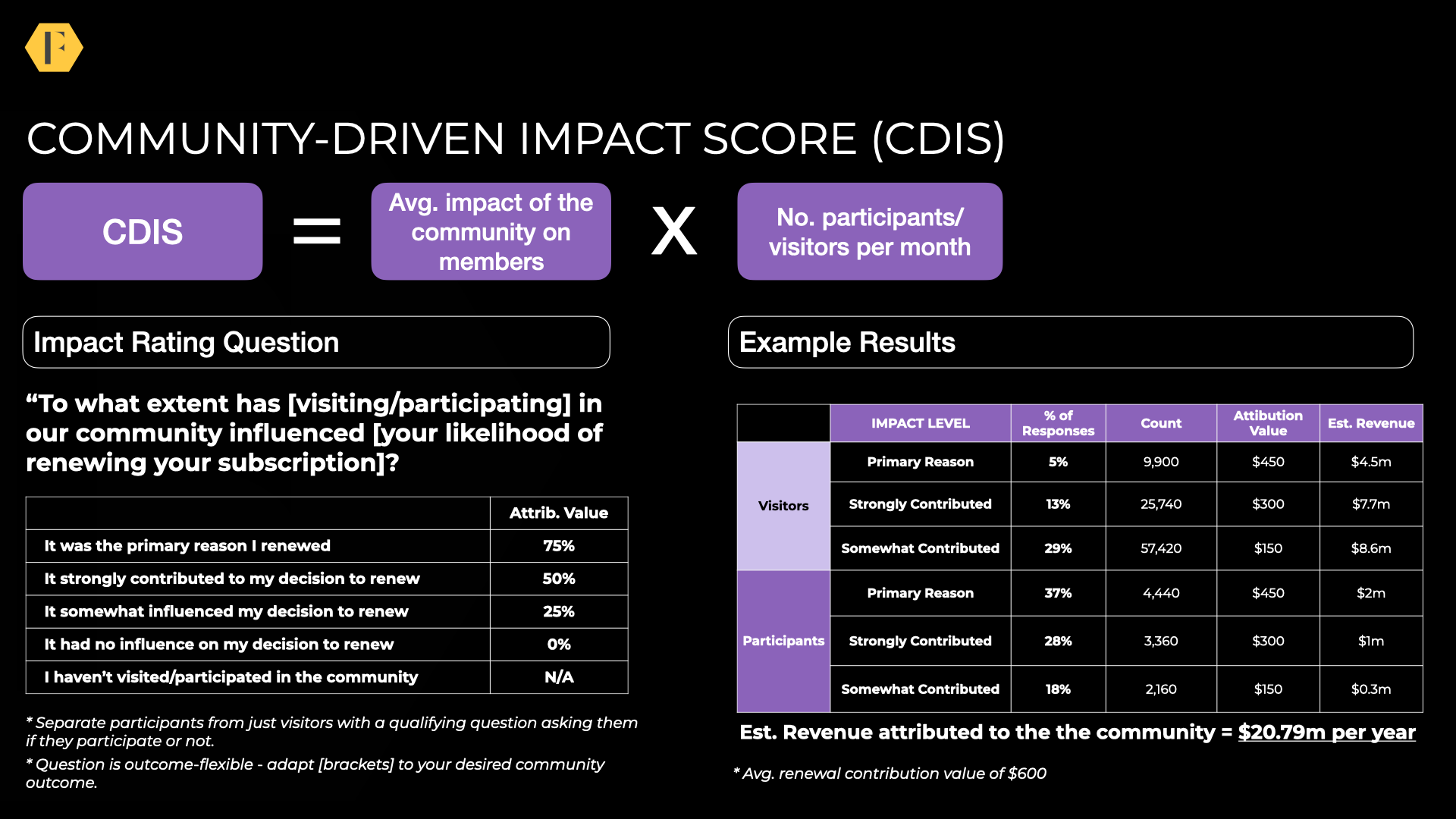
Who is Your Target Audience?
Community Goals and Objectives
You have identified both the goals and the behaviors (objectives) which will likely accomplish these goals. Remember to drop these into your template. Your next challenge is to make these objectives strategic. This means understanding which audience you will target and why.
This level does not concern your stakeholders, but it does determine what you will do and why. In the previous chapter, you learned the goal of the community is to maximize the quantity of valuable behaviors. However, you face some limitations here.
Keep Members Satisfied
You cannot repeatedly message members to perform the behaviors you want. That will annoy your members and drive them away. You can only maximize the quantity of valuable behaviors by keeping members satisfied and influencing their behavior in ways that add value to them.
Many people believe the best way to maximize behaviors is to tell members to perform them. But what if members are already performing as much of that behavior as they are ever likely to? It doesn’t matter how persuasive you are; they simply cannot perform more of that behavior. In these situations, it would make more sense to get new people to perform these behaviors.
Ansoff’s Matrix
Igor Ansoff in 1957 introduced a simple matrix for planning marketing strategies, which continues to be widely used today. We can adopt this to maximize the number of valuable behaviors we highlighted previously.

Ansoff’s Matrix identifies four ways to maximize sales. These are to sell more existing products to existing customers, sell new products to existing customers, sell existing products to new customers, or sell new products to new customers.
These are known as market penetration, market development, product development, and diversification strategies. You can adapt this to your community.
How to Maximise the Behavior You Want
If you want to maximize the number of valuable behaviors, you need to figure out if it’s easier to get existing users to perform more of their existing behaviors, get existing to perform new behaviors, attract new members to perform existing behaviors, or attract new members.
These four quadrants also lend themselves to a selection of strategies we see below.
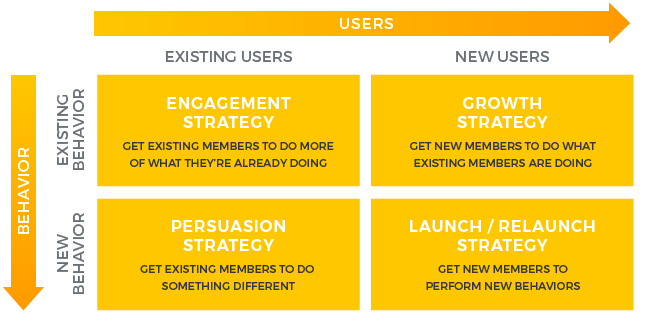

What audience should you target?
Your primary community objective(s) will target just one of these four audiences (you will have other objectives too, but we will come to those shortly). The quadrants will depend upon whichever approach is most likely to maximize the number of valuable behaviors being undertaken.
This relies upon four key questions:
- Is it easier to increase current behavior from existing members?
- Is it easier to change the behavior of existing members?
- Is it easier to attract more members?
- Is it easier to attract more members and change their behavior?
Examples of target audiences
Target Audience |
||||
| Existing users who already perform the behavior you want. | Existing users who don’t perform the behavior you want. | New users who perform the desired behavior elsewhere (outside the community) | New users who do not already perform the behavior. | |
| Goal | Maximize the level of engagement from existing members. | Get current members to perform valuable behaviors. | Get members most likely to perform the behavior to do so within the community. | Get new members to join and perform new behaviors within your community. |
| Assumption | Current members can spend more time performing this behavior | It is easier to persuade existing members than attract new ones. | It is easy to get new members to join the community and continue their behavior. | There are plenty of potential members who will perform and find value in the behavior once they learn about it. |
| Use When | Growth is stagnant (mature) and a large % of existing members are performing the behavior. | Growth is stagnant (mature) and a small % of existing members perform the behavior. | Growth is increasing and most newcomers perform the behavior you want. | Launching a new community from scratch or when nothing else has worked. |
| Types of Strategy / Tactics | Engagement Strategy
Technology (mobile, site improvements, reminders, gamification etc..) Sense of community |
Persuasion Strategy
Content, newsletters, building new social norms with a small group. |
Growth Strategy
Direct outreach, conversion, promotion, SEO/content creation, referrals. |
Launch/Revamp Strategy
Conceptualize new concept based upon deep research and understanding of the audience. |

Knowing the Audience and the Behavior
By now, you should also be able to write very specific objectives. Imagine, for example, your goal is to increase lead generation. The agreed objective might be to get members to create more content which ranks highly in search engines and brings in more traffic (assuming the same percentage of which will convert into customers).
Your primary strategy will depend upon the target audience you choose. You can target four different target audiences to achieve this goal. For example:
- Objective: Increase the quantity of content which ranks highly in search engines to increase web traffic.
- Existing users / existing behavior – Strategic Objective: Increase the quantity of content created by existing, active, community content creators to attract high levels of search traffic.
- Existing users / new behaviors – Strategic Objective: Increase the quality of content produced by existing members to rank highly in search engines and increase search traffic.
- New users / existing behaviors – Strategic Objective: Attract quality content creators to create quality content within the community to create content in the community.
- New users / new behaviors – Strategic Objective: Launch a new community to encourage members to create quality content in the topic which ranks highly in the search engines and increase search traffic.
Notice how the strategies for achieving each of these might be very different. Getting existing members to create quality content to generate more search traffic (and thus leads) would be a very different strategy from improving the quality of content from members who are not producing great content today. Likewise, targeting great content creators to join the community is another entirely different approach.
The strategy here might be one of competition between top creators to prove they are the best. This might lead to tactics like incentives, gamifications, etc.
Another might suggest training members to learn what content is great, adding nudges to create content, and gently onboarding members to upgrade their skills. You might need to tackle confidence issues here, too.

The Target Audience Matters
The above highlights just how critical identifying the target audience and the behavior is to developing a coherent community strategy.
This shows you where to spend your time to get the best results. Trying to get people to do more of what they already do, as opposed to trying to get someone to do something for the first time, would lead you down two completely different approaches.
You might have noticed the problem with setting a single objective. What happens if you pursue a strategic objective and the overall level of growth and activity within the community declines? You cannot get more members performing a specific behavior if the number of members plummets.
- Use Ansoff’s Matrix to determine quadrant of people or behaviors you are going to target.
- Set strategic objectives which target a specific group of people to perform a very specific behavior (valuable behavior or joining the community).
- Slight changes in the quadrant you focus your efforts on lead to radically different approaches in strategy.
